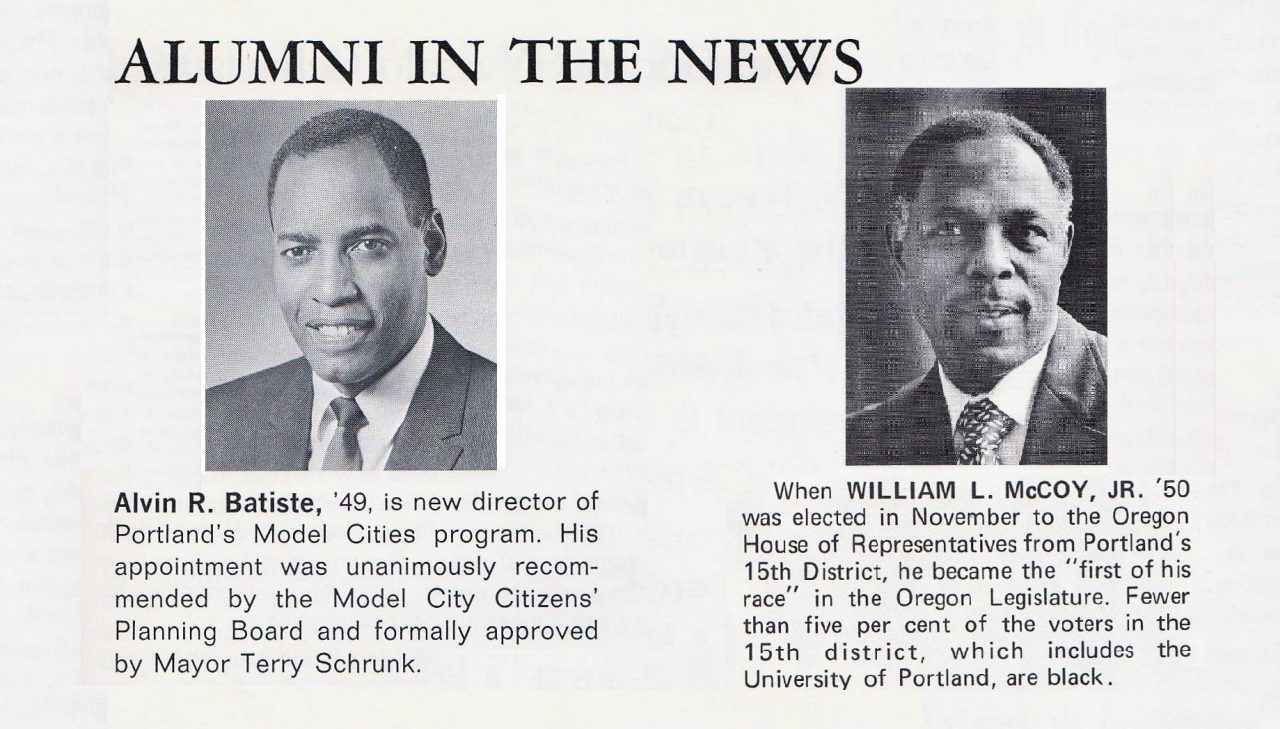There is an unfortunate banner headline in the student newspaper for December 8, 1950; which reads: PORTLAND ADMITS CO-EDS: Fifty-Year Policy Goes by Boards As Bars Are Lowered to Women (vol. XLVIII, number 10, p.1). There are many ways the words can be misread by us seventy plus years later. The actual news was the announcement “that all colleges of Portland will be open to Co-eds starting with the second semester”, effective January 27, 1951. The only barrier being dropped was that which barred women from enrolling as general undergraduates. Admissions standards (academic record, test scores) for women and men would remain the same. In point of fact, women students had been receiving University of Portland degrees in the College of Nursing since 1938 and graduate programs in the Humanities and Library Science well before this 1950 announcement removing barriers in all colleges. Still, the headline is a landmark, and draws a clear demarcation defining a before and after.

There is no similar headline or news story in University of Portland history regarding racial integration of the student body. There is no before and after in this area, because there was no exclusion practiced in this area. Diversity was always a goal. In the first years—and after—UP defined itself as an international school and advertised its ability to draw students from different parts of the globe.

The 1904-05 student list has a student with a home address in Mexico. We record students from the Philippines & Peru in 1920-21; and brag at having over 19 citizens from The Kingdom of Hawai’i attending in ‘48-‘49. The Geographical Location of Students table given at the end of the 1968 Bulletin counts 57 International students; 14 from Chile, 11 from Hong Kong.
During this same period when women were breaking down barriers of opportunity at UP, noteworthy but less noticed, three alumni — Alvin Batiste ’49, William McCoy ’50, and Fred ‘Hap’ Lee, Jr. ’50 — achieved success and brought distinction to the University in their post-collegiate careers.
Alvin Batiste was a chemical engineer at the Bonneville Power Administration following his Engineering Masters (Washington State), and became Director of the Model Cities Program, Portland, OR in 1969.
William McCoy entered public service after graduation and served ten years on the Multnomah County Welfare Commission before being elected to the Oregon State House in 1972; he returned to UP in 1976 as Speaker at summer commencement and received an honorary doctorate.
Fred Lee’s story is included in the book, Joel S. Franks, Asian American Basketball: A Century of Sport, Community and Culture (2016). While at UP, Hap Lee was one of the first Chinese American varsity basketball players in the country; a pioneer in integrating collegiate sports.

Athletics is a reliable source of undergraduate diversity, and here also, the UP Athletic Hall of Fame has promoted the contribution of minority community athletes to our campus life: John Freeman ’49; Andy Johnson ’53; Jim Winters ’56; Karyl Wing Johnson ’85; Lorena Legarde ’85.
When the University reached its half-century birthday, classrooms and sports teams were racially integrated and women were students on campus—even before the administration officially reversed and repudiated the ‘all-male’ policy– perhaps because education, access, opportunity had been the point all along.
A snapshot of time. Describing a campus neither exclusive nor exclusionary. A selective and partial history. But pointing towards an ideal of access and opportunity. One moment in the life of UP history illustrating how diversity was a normal value, uncommented, without fanfare of headlines, simply part of the fabric and experience of campus life, circa 1950. Try. Forward. Repeat. Try again. Then and now, a work-in-progress.
Leave a Reply